It was April 2010, when flight cancellations due to ash from an Iceland volcano propelled one Scottish traveller to internet stardom forever.
In the background of a Sky News reporter’s live interview with a pair of frustrated flyers at Edinburgh Airport, a gentleman in a Hooters hoodie jumped behind the couple and declared, “I HATE ICELAND”.
It’s probably the main thing most people remember about the weeks of chaos caused by the eruption of the Icelandic volcano Eyjafjallajökull more than 13 years ago.
But the incident was much more than just a funny video to share with your mates in those relatively early days of social media.
The eruption’s ash cloud caused one of the largest ever shut downs of air traffic at the time, and threw millions of people’s travel plans into chaos for weeks.
In Scotland, it resulted in major headaches for folk travelling home, holidaymakers, sports stars and North Sea offshore workers trying to get to and from platforms.
As another volcano erupts in Iceland today, fears may be growing of a repeat grounding of flights… but so far, it’s not looking to bring the same level of disruption as back in 2010, which people planning on flying home for Christmas will be happy to hear. (Fingers crossed).
Let’s look back to how the ash cloud of 2010 affected people all across the north and north-east, from Aberdeen to Inverness and beyond.
As it happened: When 2010 Iceland volcano eruption brought air travel to a halt
April 15, 2010: The first major day of disruption
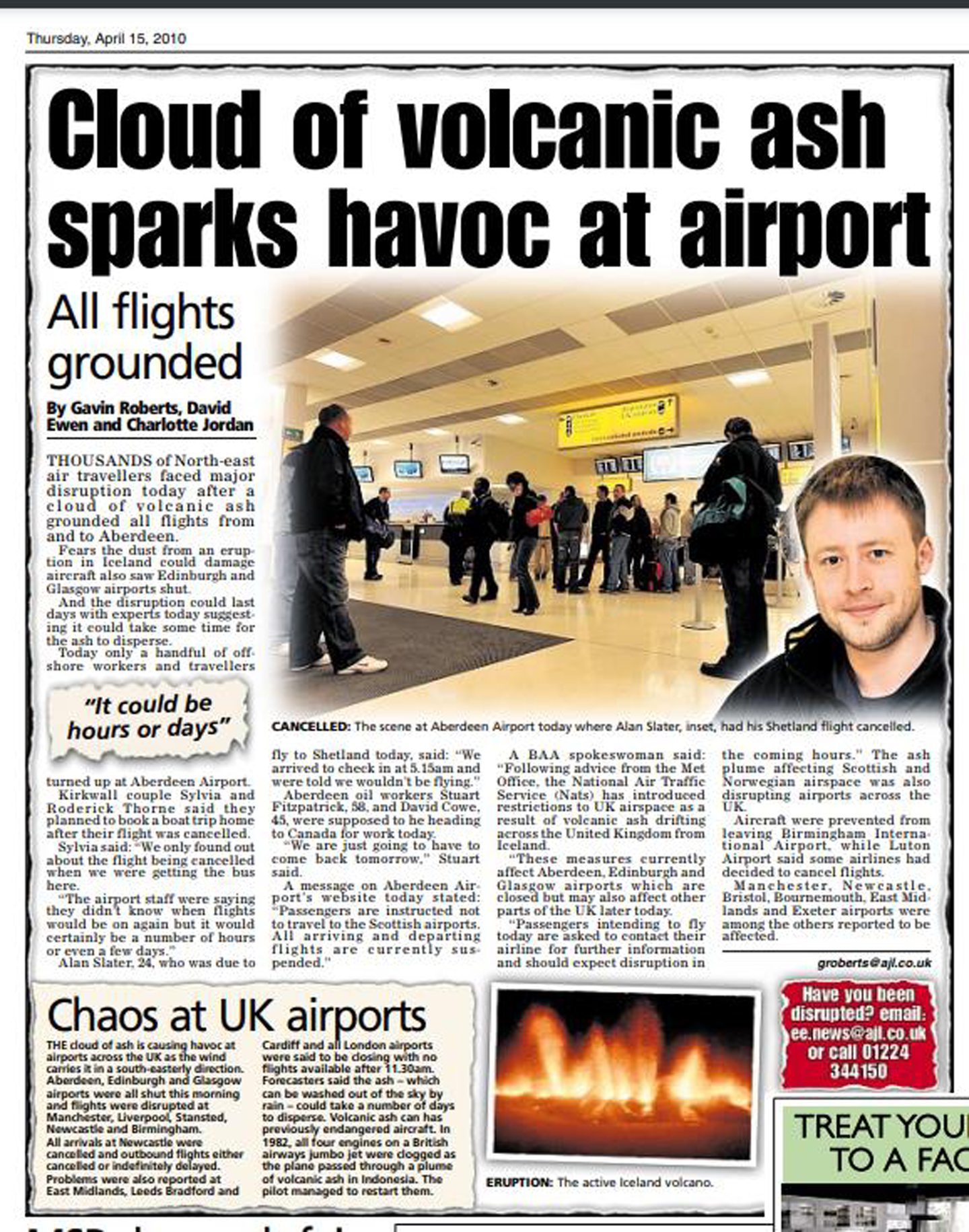
Thousands of travellers had their plans go up in smoke thanks to the Iceland volcano ash cloud.
The vast, vast majority of flights were called off, with only a handful of offshore workers and travellers turning up to Aberdeen International Airport.
One couple, Sylvia and Roderick Thorne, had to book a boat trip home after their flight was grounded.
The cloud was impacting airports all across the country, with airlines stopping flights at key locations like Birmingham, Luton, East Midlands and Manchester also affected.
April 16: Holidays ruined, North Sea helicopters brought to standstill by Iceland volcano ash
By the following day of April 16, severe travel chaos was causing all sorts of issues all across the country, and knock-on effects people may not have foreseen.
The offshore industry was rocked by North Sea helicopter operations being brought to a complete standstill.
CHC Scotia, Bond Offshore and Bristow, which operated around 58 flights a day between them at the time, were all affected.
Hundreds of oil and gas workers were left stranded offshore or unable to get to platforms in the North Sea.
Meanwhile on land, most of the 120 taxi drivers licensed to work at Aberdeen Airport at the time were forced to take the day off work due to lack of customers, losing out on thousands of fares.

In Inverness, the head of the city’s chamber of commerce Stuart Nicol said there had been a “clear and immediate impact” on Highland tourism businesses.
Meanwhile, holidaymakers rushed to the book up train and bus tickets to keep their travel plans intact.
Some travellers had to pay more than £500 on trains from Paris back to the north-east of Scotland.
ScotRail had a 300% increase in calls to its ticket office, and Aberdeen bus station was much busier than usual with travellers.
Lynne Stormonthe and Izzy Troup, from Peterhead and Aberdeen, were aiming to board a bus to Gatwick in the hopes of making it from there to their final holiday destination of Portugal.
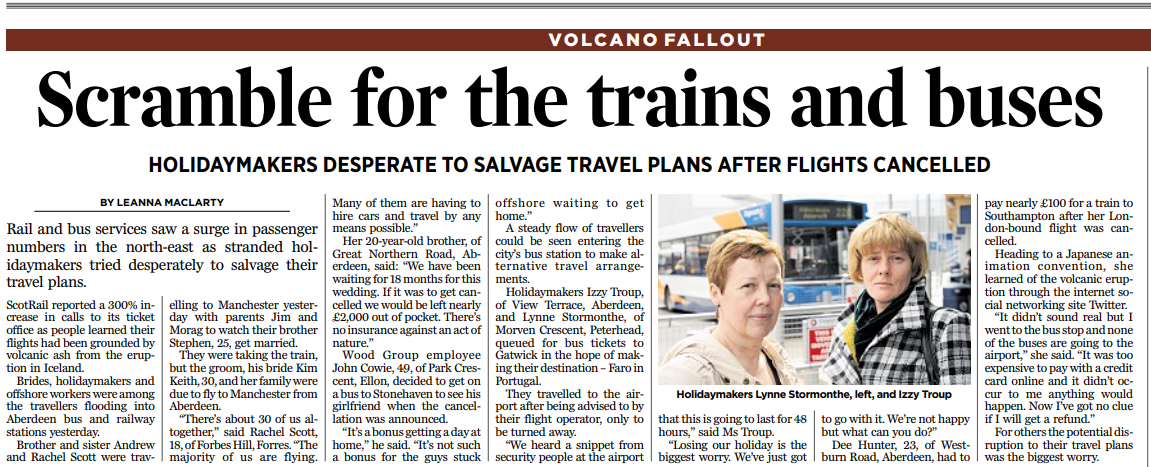
There were health concerns too.
The NHS urged people with respiratory problems to carry their medication with them, and to head indoors or “limit their activities outdoors” if they smelled sulphur or could see a dusty haze in the air.
The Met Office said in the aftermath of the Iceland volcano eruption there was actually some “very small deposits” of dust landing on the ground in Shetland.
April 17: Pressure builds to get passengers home
By April 17 and more than two days of flight disruption, pressure was starting to grow on businesses to do all they can to safely return travellers, and workers, home.
Bristow Helicopters were praying for a break in conditions to allow some off-shore flights to leave Aberdeen.
And businesses were feeling the pinch too.
One north-east fish processor with stock worth tens of thousands of pounds was left worrying if their goods would survive long enough to go to their customers in the Middle East safely.
And travel agents had hundreds of holidaymakers asking them to re-arrange holiday plans.
The boss of Alba Travel on Church Street in Inverness said at the time their “top priority is to help them re-book their flights and help others who are stranded abroad to get back home as quickly as possible.”
Most, but not all, airlines were offering refunds because of the unprecedented problems.
April 19: Fifth day of volcano travel hell
By day five of the Iceland volcano ash cloud, patience was beginning to wear thin.
Aberdeen diver Ben Maritz and his daughter had been stuck in Amsterdam since more than three days prior, still unable to get home.

He said at the time: “He said: “If I didn’t have any money we would have had to stay in the airport.
“The first night we stayed in a really bad hostel.
“We couldn’t find anywhere else as all the hotels were booked up.”
They weren’t the only ones stranded abroad.
At the time, more than 150,000 people from the UK were stuck overseas and unable to get home.
April 20: A ray of hope through the Iceland volcano ash cloud
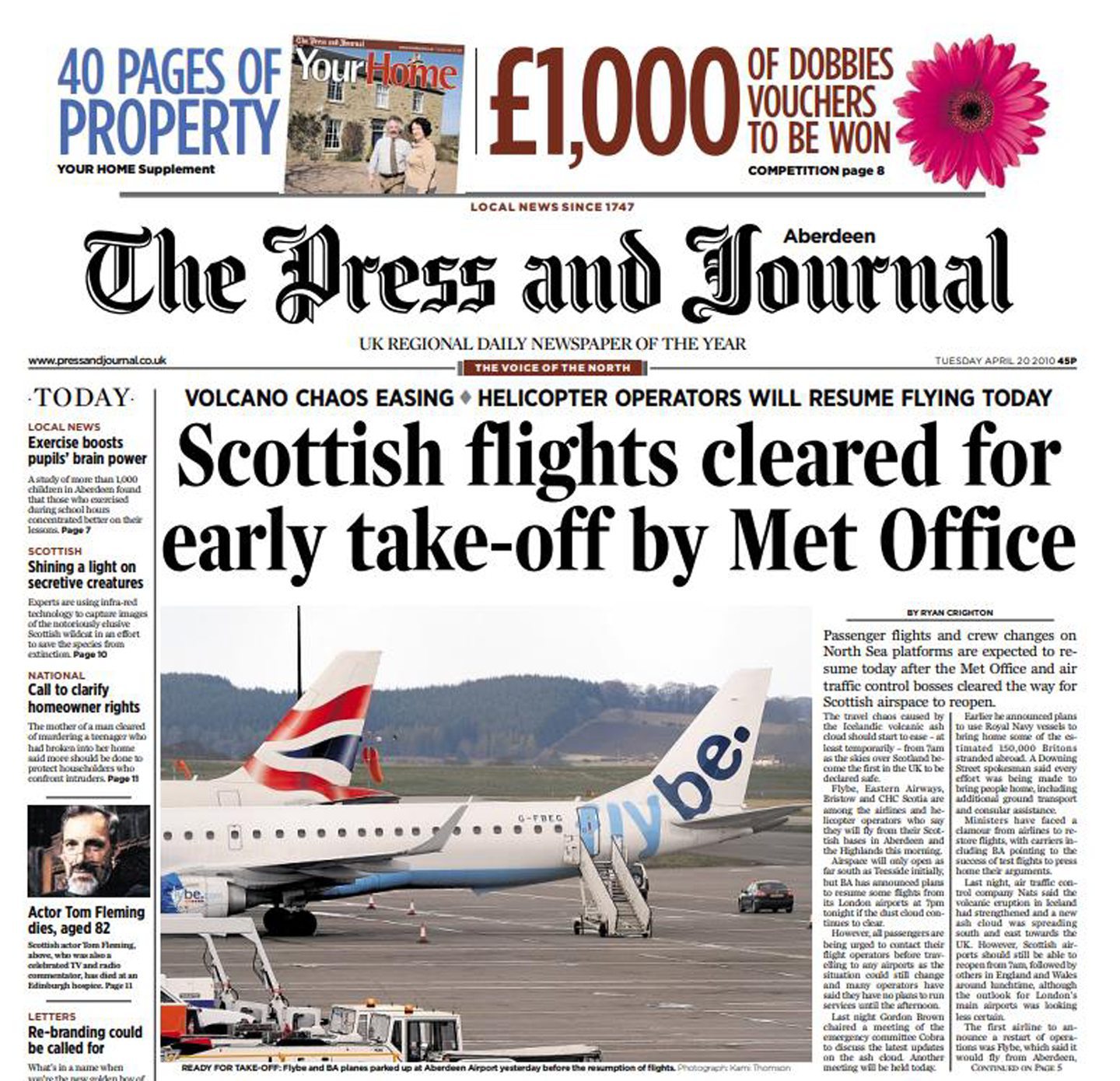
By the 20th, the end of the flight disruption seemed to be approaching.
Flybe, Eastern Airways, Bristow and CHC Scotia were some of the airlines and helicopter operators who said they would be restarting flights from Aberdeen and Highland airports.
The first flights in five days to and from Aberdeen took place, taking advantage of a gap in the cloud.
Eoin Sutherland, was one of the first passengers to arrive off the 8am Kirkwall to Aberdeen flight.
The 56-year-old oil worker said: “I was really happy to get on a flight today. I have come up to Aberdeen for the day and will hopefully be going back tonight.
“It was a smooth flight and the air was really clear. The flight wasn’t that busy, it was about 75% full.”
The situation internationally was still a bit up in the air for those stuck abroad.
The then-PM Gordon Brown had held an emergency meeting, and had announced plans for the Royal Navy to rescue some of the around 150,000 Britons still stranded overseas.
April 21: Dons big plans left in ashes, but UK skies reopen

The unforseen fallout from the ash cloud continued on April 21, this time impacting the world of sport.
The then boss of Aberdeen FC Mark McGhee said the Iceland volcano chaos had thrown his plans to hunt for new players into chaos.
McGhee said: “We did have plans for Craig Robertson to go and look at a couple of players in Eastern Europe.
“But they had to be put on hold until the volcano in Iceland settles down.
“It is frustrating but there is nothing we can do about it.”
But for everyone else in the UK, things were looking up, as all of the UK’s airports finally started reopening in earnest.
The Civil Aviation Authority had finally given the all-clear for flights to resume, after days of testing the effects of ash particles in the air on plane engines.
But we weren’t quite out of the ash cloud yet…
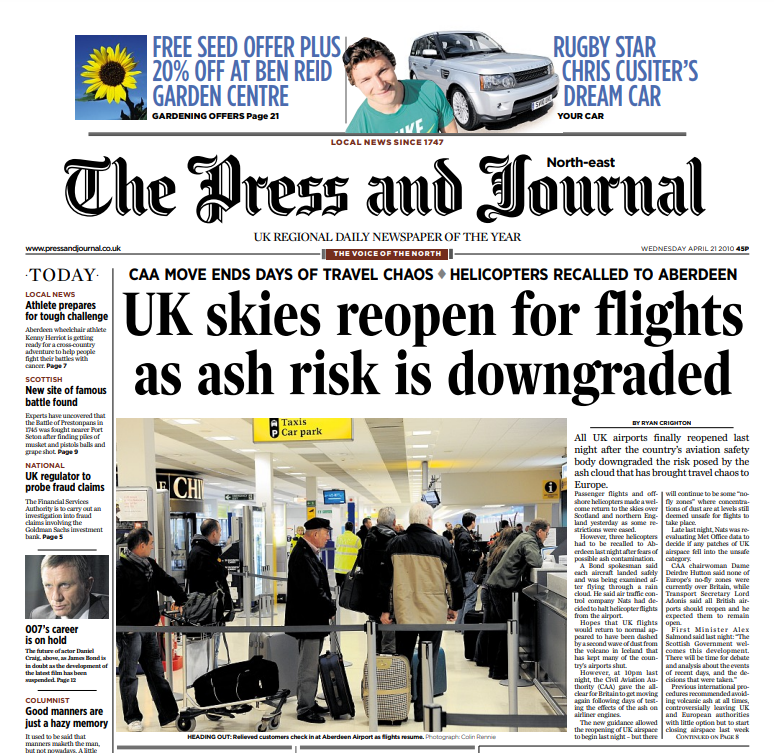
That same day, we reported how volcanic ash from the eruption forced offshore helicopter flights to be aborted, amid fears the engines could become clogged.
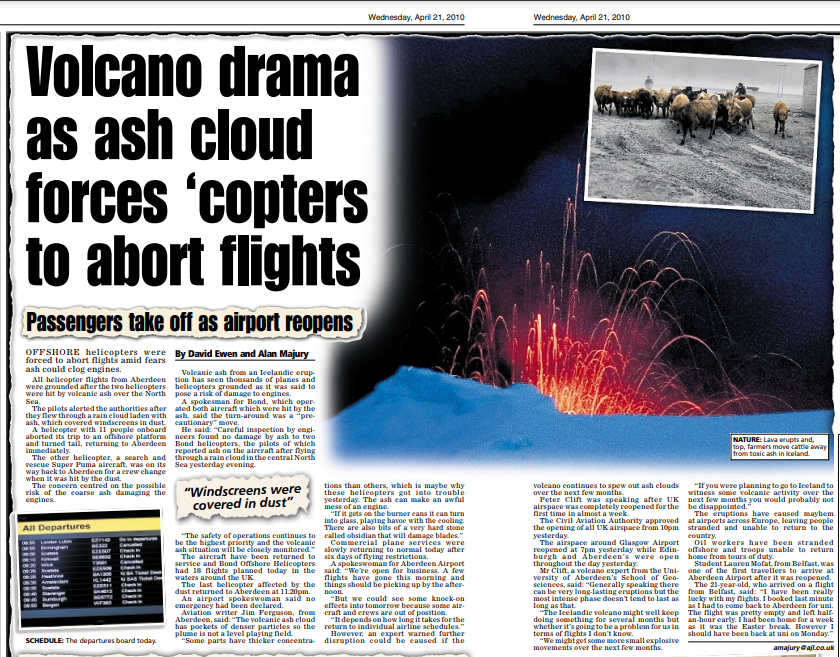
But by April 23, dozens of offshore helicopters returned to the skies above the North Sea, after aviation bosses granted permission for the aircraft to operate in low levels of ash contamination.
The worst of the initial disruption was at this point at an end, but it wasn’t the last north and north-east travellers would see from the Iceland volcano ash cloud…
May 5: Ash cloud chaos returns
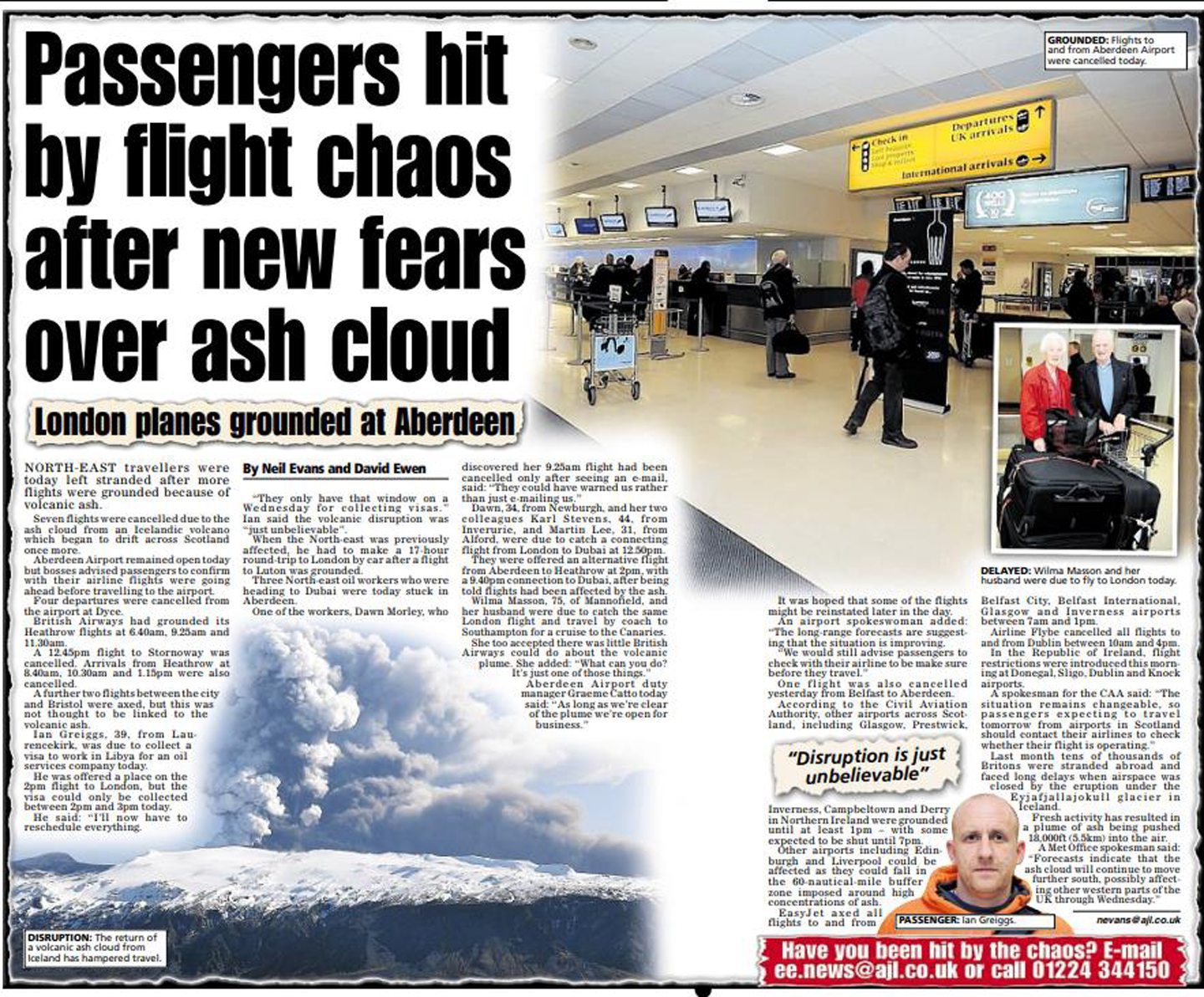
Flight cancellations and further travel problems continued in into the weeks ahead due to the Iceland volcano.
On May 5, north-east travellers were left stranded once again after more flights were cancelled.
Nine flights were called off as ash clouds on from the volcano continued to drift over Scotland on May 5.
British Airways had grounded its Heathrow flights at 6.40am, 9.25am and
11.30am.
An 11am flight to Sumburgh and 12.45pm flight to Stornoway were also grounded.
Amongst those facing disruption was a man from Kintore who had to miss his anniversary celebration because of cancellations.
The rumbling aftermath of the 2010 Iceland volcano eruption…
Throughout April, passenger numbers at Aberdeen Airport dropped 22.7% compared to normal.
By the middle of May 2010, the second phase of the eruption of Eyjafjallajökull was essentially over, however, ongoing disruption for European air travel lasted until the middle of June.
The eruption was declared officially over by October… although, the area may erupt again in the future.
In the years since there have been fears for further volcano ash clouds and the impact they could have again on Scotland, but nothing so far has been as impactful as the eruption of April 2010.
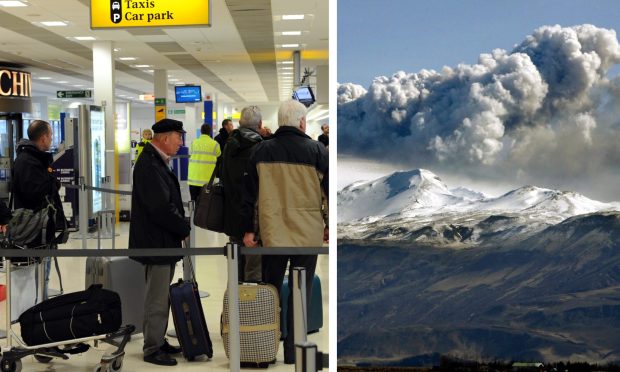
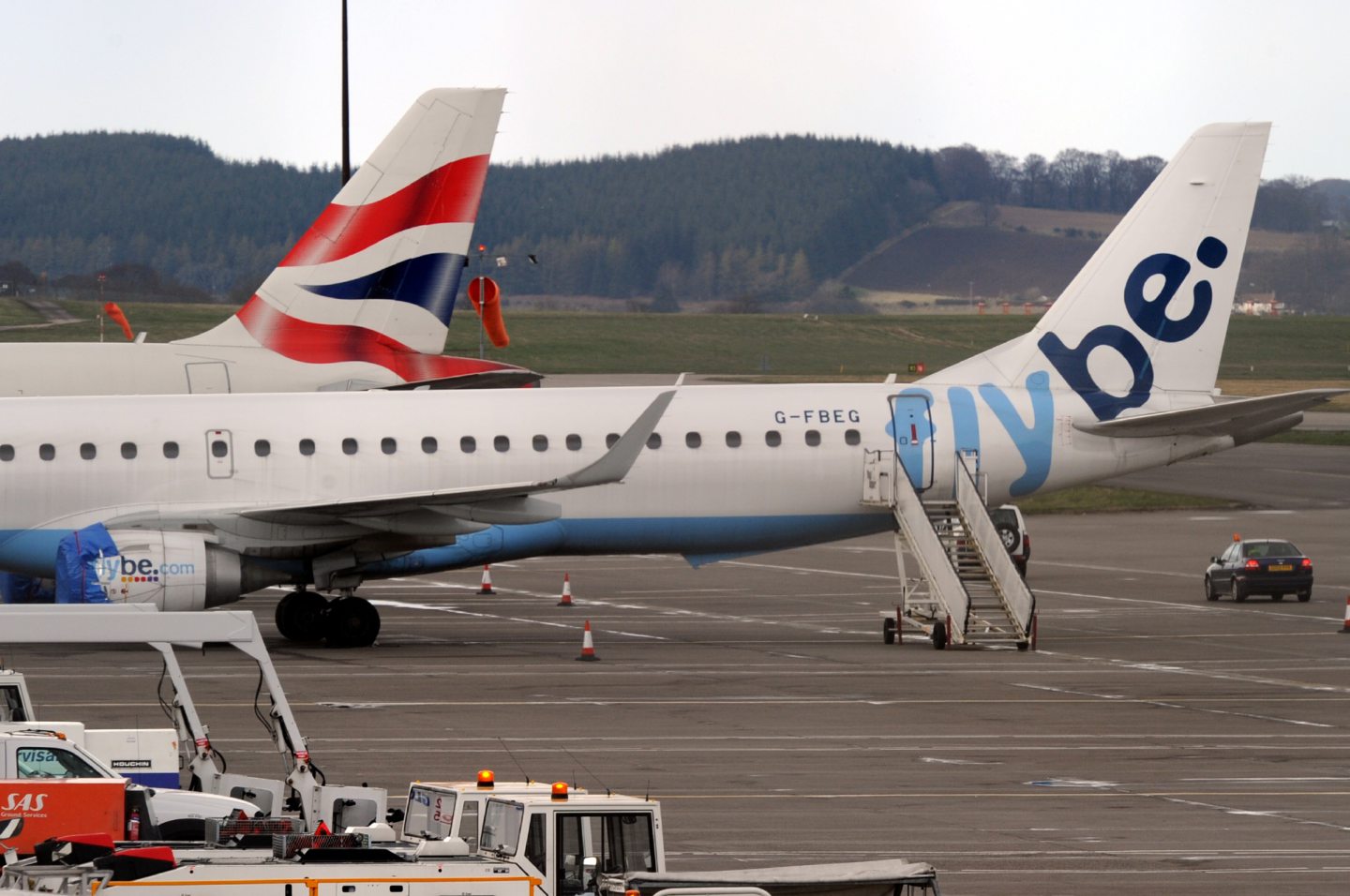


Conversation